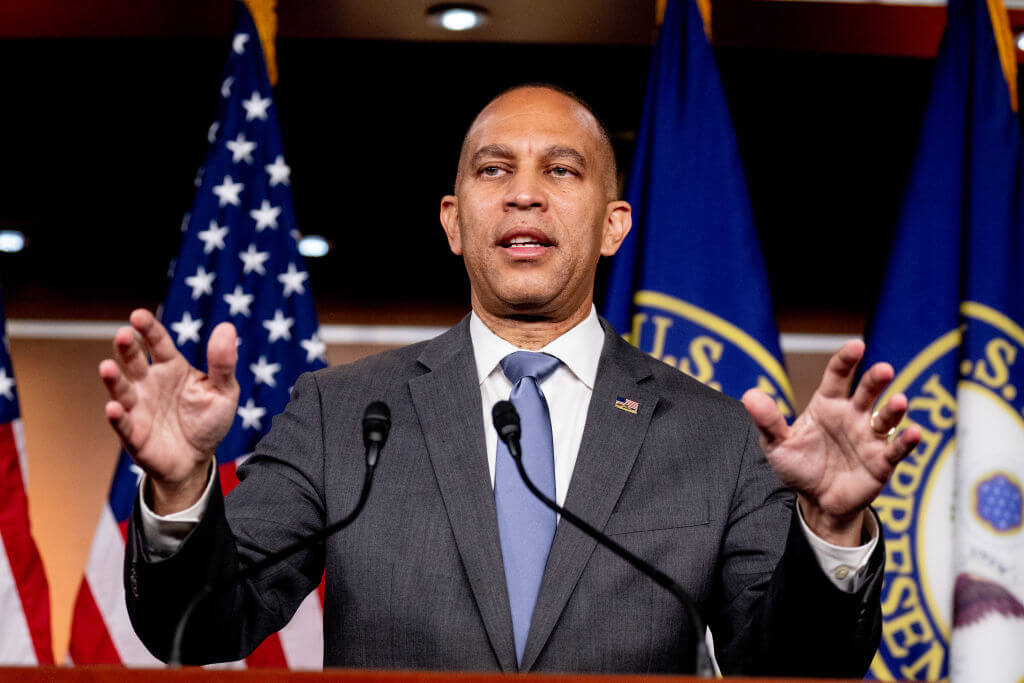Singing ‘Happy Birthday’ to ‘Hava Nagila’ as Party Classic Nears 100
Not every Jew has had a bar or bat mitzvah. Not every Jew has attended a Passover Seder. Not every Jew has planted a tree in Israel. But if there is one thing that brings together virtually all Jews — and large swaths of non-Jews — it is “Hava Nagila.”
The most joyous of Jewish songs — its name means “Come, let’s rejoice” in Hebrew — has been played at weddings, bar mitzvahs and just about every other festive occasion that involves tribe members making merry. Now, thanks to the dogged efforts of a cantor from South Carolina, the song is getting an extended celebration of its own upcoming milestone. “Hava Nagila” is turning 100 — though not quite yet.
The technical anniversary is not until 2010, but 86-year-old Sheldon Feinberg has been barnstorming the country since 2005 with “My Name Is Moshe,” a stage show about his mentor, Moshe Nathanson. Allegedly, Nathanson wrote the song at age 12 as a homework assignment at a Jerusalem school, and Feinberg has taken it upon himself to ensure that his former teacher gets the credit he is due. To that end, he challenged himself to bring Nathanson’s story to 100 locales. He’s already acted it out live in 10 cities, including Savannah, Ga., Charlotte, N.C, and Beaufort, S.C., where he and his wife, Selma, have resided for the past eight years. Now, Manhattan Borough President Scott Stringer has officially declared October 28 through November 3 “‘Hava Nagila’ 100th Anniversary Celebration Week.”
“When I met [Nathanson], I was entranced with him,” Feinberg said in an interview with the Forward. “He created this song of joy and excitement that’s become so much identified with the Jewish people.”
Indeed it has, but even this song of joy is not without controversy. Although most credit Nathanson with writing the lyrics, some say that it was actually Abraham Zevi Idelsohn — the teacher who gave Nathanson the assignment to come up with words to a wordless Hasidic tune — who composed the lyrics to the song.
Not true, said David Lefkowitz, senior cantor at Manhattan’s Park Avenue Synagogue and faculty member of Hebrew Union College’s School of Sacred Music. “The person responsible for the song is indeed Moshe Nathanson,” he said. “But Idelsohn was the instigator, the prime mover. He deserves credit for bringing the melody to Moshe’s attention.” In addition, Lefkowitz noted: “Look at the words; they’re somewhat childish. Sort of something a little kid would write.”
Feinberg is less diplomatic: “Idelsohn took credit for what his student produced. He really did not do what he should have done — which is giving credit to a 12-year-old.” Feinberg went on to say that despite this ostensible elephant in the room, Nathanson and Idelsohn remained on good terms throughout their lives. “But I’m telling the truth. Moshe Nathanson wrote the words to this song.”
Feinberg met the lyricist in the 1930s, when he was just a boy. He was quickly taken under Nathanson’s wing, and Feinberg grew to revere him. Nathanson had by then become a composer of liturgical music as well as a celebrated cantor, serving for 46 years at New York’s Society for the Advancement of Judaism, the site where many say Reconstructionism was born.
Shortly after Nathanson’s death in 1981, Feinberg wrote a book titled “Hava Nagila!: The Story of the Song and the Composer Who Gave It Its Life” — partly to memorialize a ditty so ingrained in the Jewish imagination, and partly to honor his teacher, a man whose dedication to Jewish music so inspired him that he followed in his footsteps to become a cantor.
In the years since, Feinberg has continued to pay tribute to his teacher. In 1987, to celebrate the 80th anniversary of “Hava Nagila,” he and his wife dubbed themselves the Feinberg duo and set off on “Around the World in 80 Dates,” a concert tour in which the couple sang the song at 80 different venues. “I’m on my own this time, though,” he said. “My wife is feeling her age. This is what I get for marrying an older woman — well, older by six months.”
Due to what he said was the success of the show’s initial performances, and also to his own advanced age, Feinberg brought in a cinematographer to record one of his performances. He hopes that the film will be showcased throughout the world 90 more times so that audiences can experience the power of Nathanson’s vision — without requiring that Feinberg be physically present.
Regardless of how audiences hear the story — through the book, the show, the film or word-of-mouth — Feinberg hopes they take seriously its essential message.
“The lyrics go ‘Uru achim b’lev sameach’ or ‘Awake brothers with a happy heart,’” Feinberg said. “It’s a call to people all over the world to get up and join us in joy.”
A message from our CEO & publisher Rachel Fishman Feddersen

I hope you appreciated this article. Before you go, I’d like to ask you to please support the Forward’s award-winning, nonprofit journalism during this critical time.
We’ve set a goal to raise $260,000 by December 31. That’s an ambitious goal, but one that will give us the resources we need to invest in the high quality news, opinion, analysis and cultural coverage that isn’t available anywhere else.
If you feel inspired to make an impact, now is the time to give something back. Join us as a member at your most generous level.
— Rachel Fishman Feddersen, Publisher and CEO






















